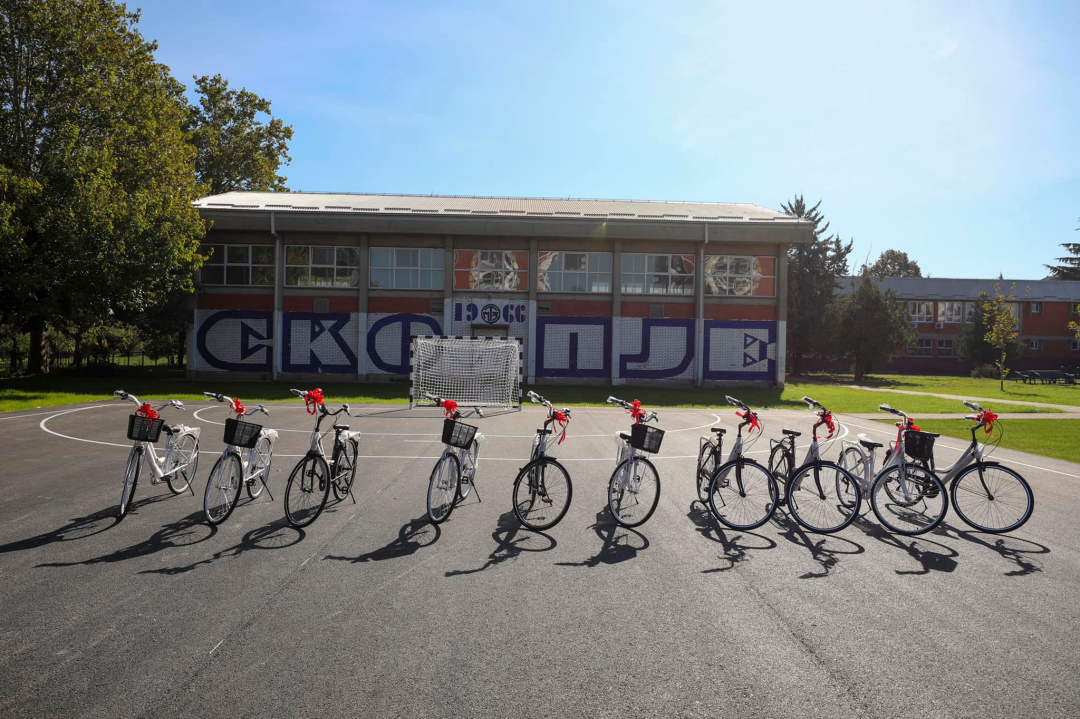Disclaimer:
Please be aware that the content herein is comprised of personal reflections, observations, and insights from our contributors. It is not necessarily exhaustive or authoritative, but rather reflects individual perspectives. While we aim for accuracy, we cannot guarantee the completeness or up-to-date nature of the content.

The vast majority of the citizens of Skopje live in areas that do not meet the minimum air quality standards, mainly caused by heavy vehicle use. Skopje citizens also face disruptive public transport with lack of real time monitoring tools in most of the areas. Walking and cycling as methods of commuting have the potential to decrease vehicle use, thus can be attained by diverting motorized commuting for distance of 2 km to walking; and for distance of 5 km to bicycle commuting, by promoting healthy and active lifestyle. Namely, daily walking and cycling have various health benefits, including cardiovascular and muscular endurance, body weight control, lowered blood pressure etc. In addition, other benefits include low costs, energy efficiency, time saving during the peak period of urban traffic, and reduced noise pollution. The overall aim regarding fluctuating urban mobility is to encourage and motivate individuals (aged 18 - 65) to practice efficient mobility i.e. to walk or to use pedal or/electric bicycles, whilst altering their daily activity patterns in terms of costs, energy and environmental conservation. We influenced behavioral changes in terms of mobility by focusing on test group consisted of 50 citizens, which perceptions and behaviors were be measured before, during and after the challenges. How we did it? - Our innovative approach for citizens’ mobilization was with one of the highly rated sport/activity application-STRAVA App. The application is used to measure people’s sports activities - hiking, running, walking, cycling, swimming etc. It uses GPS, thus gives precise calculations on the speed and distance, and additionally, it calculates statistical data over periods of time (daily, weekly, monthly). If connected with smart watch, the app goes deeper in the statistics and calculates the stress level, heartbeat, pulse ox and more. It offers users to join group challenges but it also allows creation of custom made challenges - the option that we used. We created 2 group challenges – one for walking (up to 2 km daily), other for cycling (up to 6 km daily) and randomized the test group members into them. All group participants could see who reached the challenge goal and beyond, thus there was strong competitiveness among them. After the challenges ended, we calculated and checked whether all participants reached the goals. The ones that did not were disqualified, while the others were rewarded with sport equipment. The ones that went beyond the challenge got an extra reward. The pre and post research showed that people change daily habits with small incentives. 92% of the test group walking - finished the challenge, from which 65% will continue walking that distance on daily basis. 84% of the test group cycling finished the challenge, from which 61% will continue this practice on daily basis. People get extra motivation if a target is set and got competitive when are part of a bigger group. In addition, they were motivated by their engagement in the policy making process. This action also encapsulated participatory approach by providing comments and suggestions on improving the quality of urban mobility infrastructure and sending them to the relevant authorities.
http://www.crpm.org.mk
 Consent to share form or official link.
Consent to share form or official link.

 3Good health and well-being
3Good health and well-being 13Climate action
13Climate action
Comments
Log in to add a comment or reply.